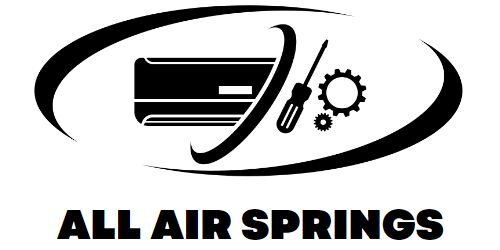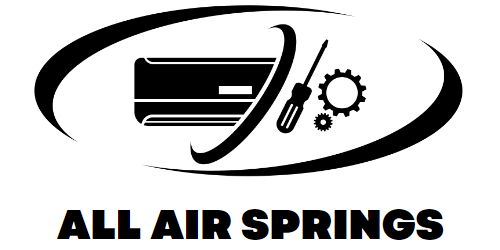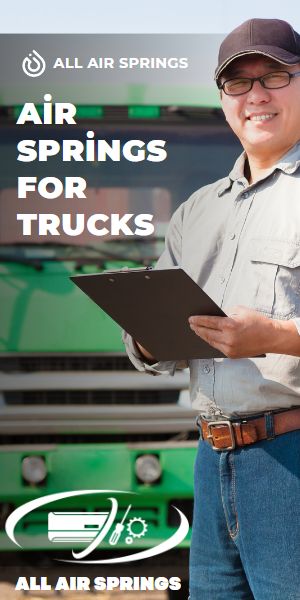The Ultimate Guide to Heavy-Duty Truck Air Suspension: Benefits, Installation, and Future Trends
How Air Suspension Works in Heavy-Duty Trucks
Air suspension systems in heavy-duty trucks are engineered to replace traditional steel spring suspension, offering a smoother ride and greater control over various driving conditions. The system primarily consists of airbags, compressors, and control valves, all of which work together to provide an adaptable and comfortable suspension solution.
At the core of the air suspension is the
airbag
(also known as an air spring), which inflates or deflates based on the vehicle’s load and the desired ride height. This allows the suspension to adjust to different loads, providing better stability and comfort compared to traditional steel springs. The compressor regulates the air pressure within the airbags, ensuring the system responds to changes in weight or terrain. It automatically pumps air into the airbags when the system detects a drop in height, compensating for the added load.
The control valves are responsible for managing the air distribution across the suspension system. They adjust the amount of air in each airbag to ensure a level and stable ride, regardless of the terrain or weight distribution.
The result is a dynamic suspension system that enhances comfort, safety, and performance, providing a more stable platform for both the truck and its load. This makes air suspension systems especially beneficial for long-haul trucking and heavy-duty applications where optimal performance is essential.
Advantages of Air Suspension for Heavy-Duty Trucks
Air suspension systems offer numerous advantages over traditional suspension systems, making them a popular choice for heavy-duty trucks. One of the most significant benefits is the
enhanced comfort and smoother ride
. The air suspension absorbs shocks more effectively, reducing the impact of bumps and uneven surfaces, which leads to a more comfortable experience for both the driver and the cargo.
Another key advantage is improved load distribution. Air suspension systems automatically adjust to the weight of the load, ensuring that the truck maintains a level stance. This results in better handling, improved safety, and less strain on other components, such as tires and axles. By distributing the weight evenly, air suspension helps prevent uneven wear and extends the lifespan of the vehicle.
Reduced wear and tear on both the vehicle and cargo is another major benefit. Since air suspension provides a smoother and more controlled ride, it helps minimize the vibrations and jolts that can damage sensitive cargo. This is especially important for trucks transporting fragile or high-value goods, as it reduces the risk of damage during transit.
Lastly, air suspension contributes to improved fuel efficiency. By automatically adjusting the ride height based on the load, air suspension helps optimize the truck’s aerodynamics and overall performance, leading to better fuel economy. Additionally, air suspension systems require less maintenance than traditional suspension systems, offering long-term cost savings.
Types of Air Suspension Systems
There are several types of air suspension systems used in heavy-duty trucks, each designed to meet specific needs and performance requirements. Understanding the differences between these systems can help fleet owners and drivers make an informed decision when selecting the best option for their trucks.
One common type of air suspension is the
bellows-style air suspension
. This system uses rubber or synthetic bellows, which are inflated to support the truck’s weight. The bellows expand and contract to maintain a smooth and stable ride. Bellows systems are often favored for their durability, cost-effectiveness, and ease of maintenance.
Another type is the air spring suspension, which uses air springs instead of traditional leaf springs. These air springs can provide a more customizable ride by adjusting the air pressure to meet the load requirements. This system is widely used in both front and rear axles for its ability to maintain optimal vehicle height and ensure even load distribution.
Active air suspension systems are the most advanced. They incorporate sensors and electronic control systems to monitor and adjust the suspension in real-time, providing superior performance. These systems can automatically adapt to changes in load, road conditions, and driving speed. Active air suspension is ideal for high-performance trucks, offering the best combination of comfort, stability, and handling.
Each type of air suspension system has its unique benefits, and the choice will depend on the specific needs of the vehicle and the driver. Considerations include cost, desired comfort level, load capacity, and the type of terrain the truck will frequently encounter.
Installation of Air Suspension in Heavy-Duty Trucks
Installing an air suspension system in a heavy-duty truck is a detailed process that requires precision and careful consideration. Whether opting for a professional installation or attempting a DIY project, understanding the basic steps and key factors involved is crucial for achieving optimal performance.
The installation begins with selecting the right system based on the truck’s specifications, load capacity, and usage. This includes determining the number of axles, the type of air suspension system (bellows, air springs, etc.), and the required components such as airbags, compressors, and control valves.
Once the system is chosen, the installation process typically involves removing the existing suspension components, such as the leaf springs, if present. The new air suspension components are then mounted, including securing the air spring brackets and aligning the airbags with the axles. Proper placement ensures that the system operates efficiently and delivers a smooth ride.
The
compressor
and control valves are also installed, with the compressor usually mounted on the frame of the truck and connected to the air system. The control valves are wired to the vehicle’s electrical system and linked to sensors that monitor the truck’s ride height and load distribution.
For those opting for a DIY installation, it’s important to follow the manufacturer’s instructions carefully, as improper installation can lead to inefficiencies or system failure. Many fleet owners and truck operators prefer professional installation to ensure all components are properly calibrated and installed according to industry standards, guaranteeing safety and performance.
Common Maintenance and Repair Issues
While air suspension systems in heavy-duty trucks are designed for durability and longevity, they do require regular maintenance and can experience some common issues over time. Understanding these issues and knowing how to address them is essential for ensuring the system continues to function optimally.
One of the most common issues is
air leaks
. Airbags or hoses can develop leaks due to wear and tear, exposure to the elements, or accidental damage. Leaks can significantly reduce the efficiency of the suspension system, leading to an uncomfortable ride and potentially damaging other components. Routine inspections and quick identification of leaks can help prevent more costly repairs down the line.
Another issue is compressor failure. The compressor is a vital part of the air suspension system, as it ensures that the airbags are properly inflated. Over time, the compressor can wear out due to excessive use or mechanical failure. Symptoms of a failing compressor include a loss of air pressure, unusual noises, or inconsistent ride height. Regular inspection of the compressor and replacing worn parts will keep the system running smoothly.
Control valve malfunctions can also occur. If the control valves become clogged or damaged, the suspension system may not be able to adjust the air pressure correctly, affecting the truck’s handling and ride quality. It’s important to clean and inspect the control valves regularly to ensure proper functioning.
Finally, improper ride height adjustments can result from faulty sensors or control systems. If the system isn’t calibrated correctly, it may not adjust the air pressure to match the truck’s load, which can lead to an uneven ride or excessive wear on the suspension components. Routine maintenance and recalibration of the system are essential to avoid these issues.
Regular inspections and timely repairs can extend the life of an air suspension system, ensuring the truck operates safely and efficiently.
Costs of Air Suspension for Heavy-Duty Trucks
The costs associated with air suspension systems for heavy-duty trucks can vary depending on several factors, including the type of system, the truck’s specifications, and whether the installation is done professionally or DIY. While the upfront costs may be higher compared to traditional suspension systems, the long-term savings and performance benefits can make air suspension a cost-effective investment.
Installation costs
are one of the primary expenses to consider. For a complete air suspension system, including components like airbags, compressors, control valves, and necessary hardware, the cost can range from a few thousand dollars to over $10,000 depending on the quality and complexity of the system. Professional installation adds to the cost, but many truck owners opt for this to ensure proper installation and calibration, which could save on future repairs.
Maintenance costs for air suspension systems tend to be lower than for traditional systems. Since air suspension reduces wear on tires, axles, and other components, trucks with air suspension typically experience fewer mechanical failures, resulting in lower maintenance expenses. Routine inspections and small repairs, such as fixing air leaks or replacing worn airbags, are generally affordable and easy to manage.
However, one area where costs can increase is in repairing or replacing major components, such as compressors, control valves, or the airbags themselves. These parts may require replacement after many years of use or under extreme conditions, but these costs are generally offset by the system’s overall durability and the truck’s ability to maintain its value.
Overall, air suspension offers long-term benefits in terms of reduced wear and tear, better fuel efficiency, and improved driver comfort. The initial higher investment can pay off through reduced maintenance, fewer repairs, and improved overall performance of the truck.
Air Suspension and Safety
One of the primary reasons air suspension systems are preferred in heavy-duty trucks is the
enhanced safety
they provide. Air suspension plays a crucial role in maintaining vehicle stability, improving handling, and minimizing the risks associated with uneven loads and road conditions.
One of the key safety benefits of air suspension is its ability to maintain vehicle height and adjust to varying load conditions. By automatically leveling the truck, the suspension system ensures that the vehicle remains stable, regardless of the weight being carried. This prevents the truck from tipping or swaying, especially when driving on uneven roads or while making sharp turns. A stable ride is crucial, particularly for heavy-duty trucks that transport large, cumbersome loads.
The system also improves braking and handling performance. Since air suspension keeps the truck level, it helps distribute the vehicle’s weight evenly across all axles. This allows for better traction and more effective braking, particularly when carrying heavy or unbalanced loads. The suspension’s dynamic adjustment helps prevent excessive bouncing, ensuring a smoother and safer driving experience for both the driver and other road users.
Another important safety feature is the ability to improve road clearance. Air suspension can be adjusted to raise the truck’s ride height, which helps prevent bottoming out when navigating rough terrain, obstacles, or steep inclines. This added clearance reduces the risk of damage to the undercarriage and minimizes the likelihood of accidents caused by low clearance.
In terms of overall vehicle safety, air suspension helps reduce driver fatigue by providing a smoother ride, reducing the stress and strain on the driver, especially on long-haul trips. This contributes to better focus and alertness, improving the overall safety of the truck and its operation.
By improving stability, load distribution, braking, and ride comfort, air suspension systems significantly enhance the safety of heavy-duty trucks, ensuring better performance on the road and reducing the risk of accidents or mechanical failures.
Future Trends in Air Suspension Technology
The future of air suspension technology for heavy-duty trucks is filled with exciting innovations aimed at improving performance, comfort, and efficiency. As technology advances, new systems are being developed to address the evolving needs of the trucking industry, from sustainability to automation.
One major trend is the
integration of smart technologies
. Future air suspension systems will incorporate advanced sensors and artificial intelligence to automatically adjust the suspension in real-time. These systems will use data from various sensors to monitor road conditions, load distribution, and driving behavior. By making continuous adjustments, the air suspension will provide an even smoother and more efficient ride, while also optimizing fuel consumption and reducing wear on other vehicle components.
Automated load leveling is another promising advancement. In the future, air suspension systems will automatically adjust to load changes without requiring manual input from the driver. This means the suspension will constantly monitor and adapt to the weight and distribution of the cargo, ensuring a level ride and improving the vehicle’s handling and safety. This automation will also reduce driver workload, allowing for more consistent and efficient operations.
Sustainability is also a growing focus within the air suspension market. Manufacturers are working on making air suspension components more eco-friendly by using recyclable materials and reducing energy consumption in the system’s operation. There is potential for using electric compressors and incorporating alternative energy sources, making the technology more energy-efficient and reducing its carbon footprint.
Improved durability and cost-efficiency will continue to be a key focus for air suspension systems. Manufacturers are exploring ways to enhance the lifespan of airbags and other components to reduce the frequency of replacements and lower long-term maintenance costs. Advances in materials science, such as stronger, more flexible rubbers and lightweight metals, will help to improve the durability and performance of air suspension systems.
With these advancements in smart technology, sustainability, and durability, air suspension systems are set to become even more efficient, cost-effective, and environmentally friendly in the coming years. As the technology continues to evolve, it will shape the future of heavy-duty trucking, offering significant benefits to fleet owners, drivers, and the industry as a whole.
For detailed information, you can contact us at torqueusa.com


